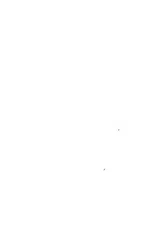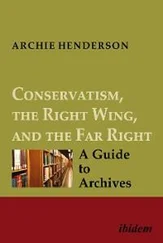Andrea Dworkin - Right-wing Women
Здесь есть возможность читать онлайн «Andrea Dworkin - Right-wing Women» весь текст электронной книги совершенно бесплатно (целиком полную версию без сокращений). В некоторых случаях можно слушать аудио, скачать через торрент в формате fb2 и присутствует краткое содержание. Жанр: Старинная литература, на английском языке. Описание произведения, (предисловие) а так же отзывы посетителей доступны на портале библиотеки ЛибКат.
- Название:Right-wing Women
- Автор:
- Жанр:
- Год:неизвестен
- ISBN:нет данных
- Рейтинг книги:4 / 5. Голосов: 2
-
Избранное:Добавить в избранное
- Отзывы:
-
Ваша оценка:
- 80
- 1
- 2
- 3
- 4
- 5
Right-wing Women: краткое содержание, описание и аннотация
Предлагаем к чтению аннотацию, описание, краткое содержание или предисловие (зависит от того, что написал сам автор книги «Right-wing Women»). Если вы не нашли необходимую информацию о книге — напишите в комментариях, мы постараемся отыскать её.
Right-wing Women — читать онлайн бесплатно полную книгу (весь текст) целиком
Ниже представлен текст книги, разбитый по страницам. Система сохранения места последней прочитанной страницы, позволяет с удобством читать онлайн бесплатно книгу «Right-wing Women», без необходимости каждый раз заново искать на чём Вы остановились. Поставьте закладку, и сможете в любой момент перейти на страницу, на которой закончили чтение.
Интервал:
Закладка:
making masses of women extinct because their children are not
wanted. The United States, a young, virile imperialist power compared to its European precursors, has pioneered this kind of reproductive imperialism. The United States was the perfect nation to do so, since the programs depend so much on science and tech


nology (the nation’s pride) and also on a most distinctive recognition of precisely how expendable women are as women, simply because they are women. Obsessed with sex as a nation, the
United States knows the strategic importance of the uterus, abroad
and at home.
Inside the United States, gynocidal polices are increasingly discernible. The old, the poor, the hungry, the drugged, the mentally ill, the prostituted, those institutionalized in wretchedly inhumane
nursing homes and mental hospitals, are overwhelmingly women.
In a sense, the United States is in the forefront of developing a
postindustrial, post-Nazi social policy based on the expendability
of any group in which women predominate and are not valued for
reproduction (or potential reproduction in the case of children).
Public policy in the United States increasingly promises to protect
middle-class or rich white women owned in marriage who reproduce and to punish all other women. The Family Protection Act— a labyrinthian piece of federal legislation designed to give
police-state protection to the male-headed, male-dominated, fe-
male-submissive fam ily— and the Human Life Amendment, which
would give a fertilized egg legal rights adult women are still without, would be the most significant and effective bludgeoning instruments of this public policy if passed. Along with already actual cutbacks in Social Security, Medicaid, and food programs, these
laws are intended to keep select women having babies and to destroy women who are too old to reproduce, too poor or too black or brown to be valued for reproducing, or too queer to pass. This, in
conjunction with the flourishing pornography industry in which
women are sexually consumed and then shit out and left to collect
flies, suggests that women will have to conform slavishly to right-
wing moral codes to survive; and that, too poor or too old, a
woman’s politics or philosophy however traditionally moral will
not make her life a whit more valuable. The use the state wants to
make of a woman’s uterus already largely determines— and will
more effectively determine in the future— whether she is fed or


starved, genuinely sheltered or housed in squalor, taken care of or
left in misery to pass cold, hungry, neglected days.
The association of women with old age and poverty predates the
contemporary Amerikan situation, in which women are the bulk of
both the old and the poor. In 1867, Jean Martin Charcot, known
primarily for his work with the institutionalized insane, did a systematic study of old age. The population he studied was old women in a public hospital in Paris—female, old, poor, urban.
Since that time, many psychological and sociological generalizations about the old have been framed as if the population under discussion were male, even when it was exclusively female as in
Charcot’s study. Many observations about the old were made by
professional men about poor women. As if to signal both the symbolic and actual relationship between old age and women, the first person in the United States to receive a Social Security check after
the passage of the Social Security Act in 1935 was a woman, Ida
M. Fuller. Now in the United States, when there is no doubt
whatsoever that the old are primarily female, that the poor are prim arily female, that those on welfare are primarily female, that those in nursing homes are primarily female, that those in mental
institutions are primarily female, there is still no recognition that
the condition of poverty is significantly related to the condition of
women; or that the status of old people, for instance, is what it is
because the bulk of the old are women. “Indeed, ” writes one writer
on old age, “relatively recent trends in the aging of America may
have changed the status of older Americans. It is conceivable, for
instance, that the elderly have become a much larger burden to
society since World War I. After all, women, very old persons,
and those ‘stuck’ in deteriorating locations now constitute a greater
proportion of the aged population than ever before. ” 3 Women,
very old persons, and those “stuck” in deteriorating locations:
women, women, and women. “After all, ” women, women, and
women “now constitute a greater proportion of the aged population
than ever before”—the status of the old has changed, gone down;


they are more of a burden; “after a ll, ” they are women. In 1930,
there were more men over sixty-five than women; by 1940, there
were more women. In 1970, there were 100 women to 72 men over
sixty-five. In 1990, for every 100 women there w ill “only” be 68
men (as the experts put it). The situation is getting worse: because
the more women there are, the fewer men, the worse the situation
gets. Old women do not have babies; they have outlived their husbands; there is no reason to value them. T hey live in poverty because the society that has no use for them has sentenced them to death. Their tenacity in holding on to life is held against them.
Cuts in Social Security and food programs for the old directly issue
from the willingness of the U . S. government to watch useless
females go hungry, live in viciously degrading poverty, and die in
squalor. On the television news, social workers tell us several times
a week that old people are going hungry: “they have just enough
food to keep them alive, ” one said, “but they never eat enough to
stop them from being hungry. ” Then we see the interviews with
old people, the cafeterias where old people who can walk go to get
their one meal of the day. T hey are mostly women. T hey say they
are hungry. We can observe, if we care to, that they are female and
hungry.
W ithin this population of the old, there are the people in nursing
homes. “There are more than 17, 000 nursing homes in the United
States— as opposed to roughly 7, 000 general hospitals— and their
aggregate revenues exceed $12 billion a year, ” writes Bruce C.
Vladeck in U nloving Care: The N ursing Home Tragedy. “T hey have
been described as ‘Houses of Death, ’ ‘concentration cam ps, ’ ‘warehouses for the d yin g. ’ It is a documented fact that nursing home residents tend to deteriorate, physically and psychologically, after
Читать дальшеИнтервал:
Закладка:
Похожие книги на «Right-wing Women»
Представляем Вашему вниманию похожие книги на «Right-wing Women» списком для выбора. Мы отобрали схожую по названию и смыслу литературу в надежде предоставить читателям больше вариантов отыскать новые, интересные, ещё непрочитанные произведения.
Обсуждение, отзывы о книге «Right-wing Women» и просто собственные мнения читателей. Оставьте ваши комментарии, напишите, что Вы думаете о произведении, его смысле или главных героях. Укажите что конкретно понравилось, а что нет, и почему Вы так считаете.












